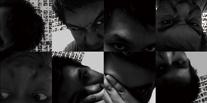Art / Lust / Photography 〉〉〉
SPACE 17 (January) features erotic art and photography. One of the forerunners in this industry is Terry Richardson. His works are charged with sexual tension, yet is regarded by the public as a highly-respected form of art. From fashion designers to President Obama, all were happy to be associated with Terry Richardson. His legacy tells the rest. Yonehara Yasumasa is another example of an erotic artist that has now achieved international fandom and prestige. The erotic industry doesn’t always have to point to sex and nudity, especially in Europe, Japan and the US. As a matter of fact, it is simply the opposite: An artist’s most intimate interpretation of aesthetics induces the viewer to look deeper into the boldness of his/her work. On this ground, SPACE 17 introduces Maco Hsu, who has already gained recognition in cultural platforms on an international scale. Gamanians get to re-value what these topics represent when coming face to face with these very sexual images. It is not pornography.
The international icon, Murakami Takashi, coined the term superflat to describe his earlier works that covered sexual topics. Murakami is not an erotic artist, and not a realist, either. Nor is lust a prominent theme in his superflat movement. Yet it is almost impossible to not associate the visual impact Murakami’s art with erotica. This is exactly what he aimed to convey.

Being pretentious is one thing, not being it is another.
When a rainbow chimpanzee comes along, I would rather stick to an ordinary monkey.
Huang Hung-Teh (1956-present)
It challenges our ideas on “sex”. Since forever, nudity had been a popular subject in art. After the camera was invented in 1830, art and technology fused in a way it never had, and its influence went a long way. In the 19th century, the demand for visual erotica exploded. The majority (of men) were financially capable to purchase such stimulation. It is obvious how a graphic image would be more enticing than words. From the lens to the negatives; the machine to the model… Viewers are attached to the image, and a connection stems.
It is impossible for an audience not to react to erotic art, because sex is something that you cannot remove from life. When the familiar is taken out of context and put in public display (complete with its awkward, crude or even shameful elements), something is always triggered. Always.
The Dadaism and Surrealism movements defined most of 20th century art. All moral values, virtues and aesthetics were deconstructed thereafter. Photographers are keen to have their models undress– no matter to celebrate feminism, anti-war statements, or even just to tackle capitalism: the naked human body is now a weapon. It the perfect platform for voicing the extreme.
Different from pornography and the exchange of raw sex, erotic photography implements metaphors and backgrounds. Instead of exposing, it suggests. Contemporary Japanese photographer and artist, Araki Nobuyoshi, often uses sex workers in his work. He captures their images on the streets of Tokyo, under cherry blossoms, or even when they are trying to stop a male client… You experience their lives in his exhibitions, as if you were in Japan. A good erotic photo is not always about sex. It stands for much more. It is those gray areas that we never focus on, those corners of our senses that is given a spotlight!
We must ask ourselves: What is the purpose of erotic photography, and to what extent does it tickle the senses of the view and itself? Has it really scratched the spot?
Artists can be as pretentious as they like, or not. The fact is, when they stand in front of a mirror, they choose to interpret themselves one way or the other. Is can be presented in many ways, and we don’t always need to define them. As a hybrid of the human body, commodity, advertisement and art, it makes its own way.
Maco Hsu


